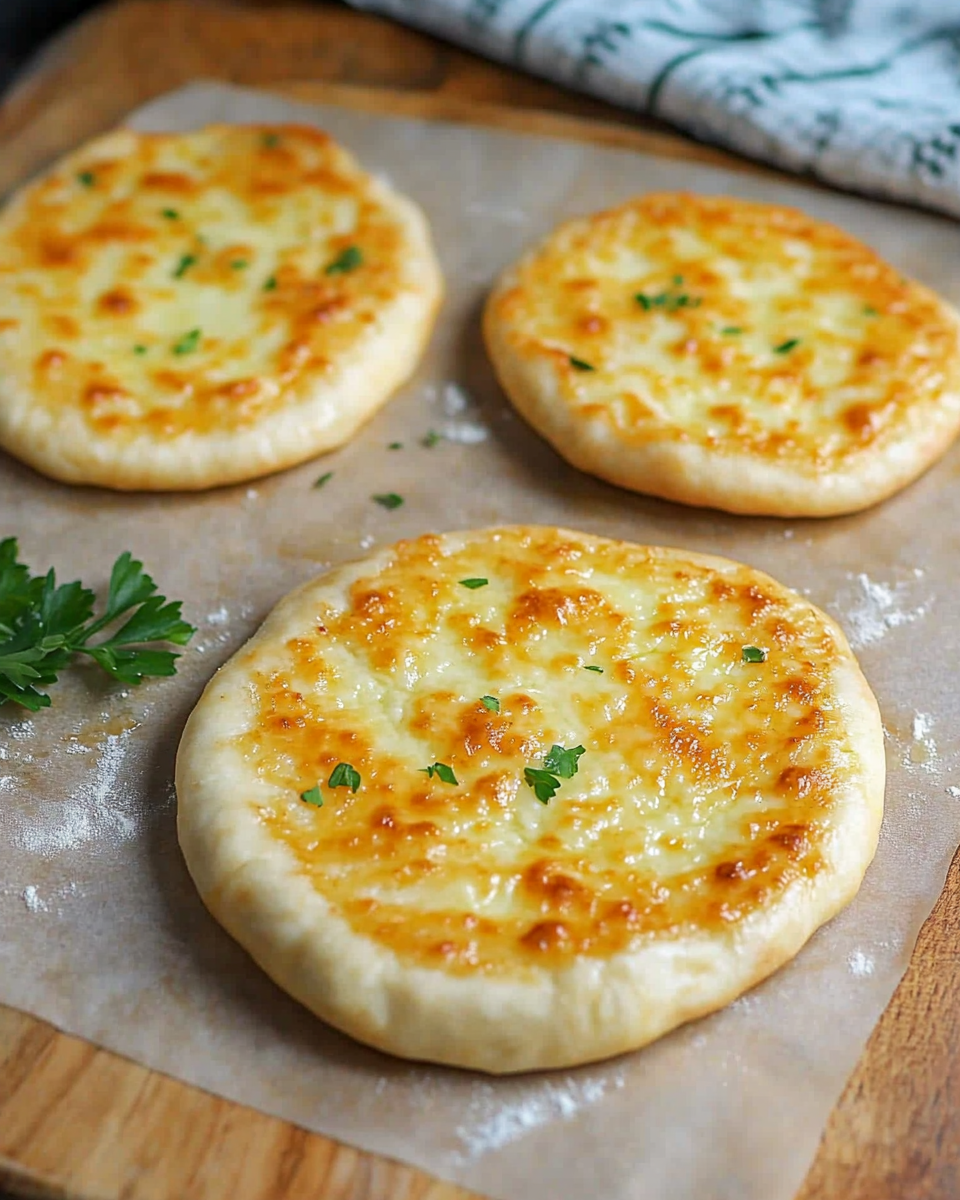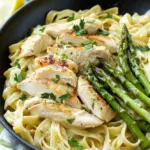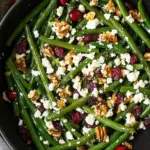Cheese Manakish is a delectable Middle Eastern flatbread that’s simple to make yet full of rich, savory flavors. Topped with a blend of melted akkawi cheese and mozzarella, it’s perfect for breakfast, a snack, or even a light meal. The za’atar spice adds an aromatic touch that complements the cheesy goodness, making each bite irresistible.
What makes this dish so versatile is its ability to be served warm and fresh straight from the oven. You can enjoy it on its own or pair it with a variety of sides, such as hummus, baba ganoush, or even a fresh salad. Whether you’re making it for a family gathering or just a casual weeknight meal, Cheese Manakish will bring a taste of Lebanon to your table, effortlessly.
Full recipe:
Ingredients:
-
2 cups all-purpose flour
-
1 teaspoon instant yeast
-
1 tablespoon sugar
-
1/2 teaspoon salt
-
1 tablespoon olive oil
-
3/4 cup warm water
-
1 1/2 cups akkawi cheese (or feta cheese as an alternative)
-
1/2 cup mozzarella cheese
-
2 tablespoons olive oil (for brushing)
-
1 teaspoon za’atar spice
-
Fresh parsley for garnish
Directions:
-
In a bowl, combine flour, yeast, sugar, and salt. Mix well.
-
Add olive oil and warm water gradually to the flour mixture, stirring to form a dough.
-
Knead the dough for 8-10 minutes until smooth and elastic. Cover and let it rise for 1 hour, or until doubled in size.
-
Preheat the oven to 450°F (230°C). Line a baking sheet with parchment paper.
-
Divide the dough into 4 equal portions and roll each portion into a circle about 6 inches wide.
-
In a bowl, combine akkawi cheese (or feta) with mozzarella. Spread the cheese mixture evenly over the dough circles.
-
Drizzle olive oil over the top of each flatbread and sprinkle with za’atar spice.
-
Bake in the preheated oven for 10-12 minutes, or until the flatbreads are golden and the cheese is melted and bubbly.
-
Remove from the oven and garnish with fresh parsley. Serve warm.
Prep Time: 20 minutes | Cooking Time: 12 minutes | Total Time: 32 minutes
Kcal: 250 kcal | Servings: 4 servings
The Origins and Tradition of Manakish
Manakish has been a part of Middle Eastern food culture for centuries. It’s commonly enjoyed by families and friends as part of a traditional breakfast meal or as a snack during the day. During my childhood experiences in Jordan and Kuwait, Manakish was widely loved by locals and was often served as a delicious alternative to pizza. Manakish is especially adored for its flexibility in terms of toppings. While cheese is the most common topping, variations with minced lamb, chicken, and za’atar (a spice mix) are just as beloved.
In the Middle Eastern culture, Manakish holds a significant place and is often shared among friends and families. It’s a symbol of hospitality and togetherness, enjoyed alongside fresh vegetables, olives, and traditional dips like Baba Ganoush or Labneh (a yogurt-based cheese).
Cheese Manakish vs. Fatayer: What’s the Difference?
When exploring Middle Eastern cuisine, many people get confused between Cheese Manakish and Fatayer. Although both dishes are similar in ingredients and cooking techniques, they have key differences. Manakish is a type of flatbread, usually round in shape, much like a pizza, and often topped with cheese or other toppings like minced meat or za’atar. Fatayer, on the other hand, is more like a pastry or pie. The dough is typically folded over the filling, creating a pocket, similar to an empanada. Fatayer is often filled with cheese, spinach, or minced meat, whereas Manakish is typically a flat, open-faced dish.
The Secret to Perfecting the Dough
One of the most important elements of making Cheese Manakish is the dough. The dough is made with basic ingredients such as flour, yeast, olive oil, and water, but it’s the method that truly makes the difference. The dough should be soft, elastic, and airy. The yeast helps the dough rise, and the olive oil adds richness, making it more pliable. Allowing the dough to rise for an hour or two at room temperature gives it the perfect texture—light and fluffy with a slight chewiness that complements the cheese topping beautifully.
The dough is typically rolled into small, round pieces and then topped with a mixture of mozzarella and cream cheese. This creates a perfect balance of creamy and melty cheese with the softness of the dough. For added flavor, sesame seeds can be sprinkled on top, adding an extra crunch and a nutty undertone to the overall dish.
How to Assemble and Top Your Cheese Manakish
Assembling Cheese Manakish is a straightforward process. Once the dough is ready, divide it into portions and flatten each portion into a round shape, about 5-6 inches in diameter. Then, spread a layer of cream cheese, followed by a generous sprinkle of mozzarella. Some recipes also call for a drizzle of olive oil or a sprinkle of sesame seeds to enhance the flavor.
Baking Cheese Manakish is quick, and the oven temperature should be preheated to 200°C (400°F). Once the flatbreads are topped, they’re baked for about 10 minutes, or until the cheese is melted and golden brown. The aroma that fills the kitchen during baking is mouthwatering and sure to make anyone eager to dig in.
Creative Variations and Substitutions
While the classic Cheese Manakish is a favorite, there are endless possibilities for customizing the toppings to suit your taste. For instance, you can use feta cheese, Akkawi cheese, or even goat cheese instead of mozzarella for a different flavor profile. If you prefer a tangier taste, adding Labneh (Middle Eastern yogurt cheese) is a great option.
For an added depth of flavor, you can sprinkle za’atar on top before baking. Za’atar, a mix of dried thyme, sesame seeds, sumac, and salt, is a popular spice blend in Middle Eastern cooking. It adds a distinct herby and citrusy flavor that perfectly complements the cheese.
If you want to experiment further, try adding olives, roasted vegetables, or even cooked minced meat as toppings. The possibilities are endless, making Cheese Manakish a versatile dish that can be customized based on your preferences.
Storage and Reheating
Cheese Manakish is best served fresh out of the oven, but you can store leftovers for later. To keep them fresh, place them in an airtight container and store them in the refrigerator for up to a week. If you want to keep them longer, you can freeze them for up to a month. To reheat, simply place them in the microwave for about 1 minute or warm them up in the oven for a few minutes until heated through. The cheese may not be as melty as when freshly baked, but the flavor will still be delicious.
What to Serve with Cheese Manakish
Traditionally, Cheese Manakish is served as part of a larger breakfast spread. It pairs wonderfully with fresh vegetables, such as cucumber, tomatoes, and olives, as well as yogurt-based dips like Labneh or even hummus. The combination of the savory flatbread with fresh, raw vegetables is both refreshing and satisfying.
For a complete meal, you can serve Cheese Manakish with scrambled eggs or a side salad. A cup of Arabic tea or fresh mint tea pairs perfectly with the dish, making it a delightful meal to enjoy with family and friends.
Conclusion
Cheese Manakish is a delicious and versatile Middle Eastern flatbread that brings together the best of fresh, warm bread and savory cheese. It is a comforting dish that can be enjoyed at any time of day, whether for breakfast, a snack, or a light meal. With its fluffy dough and creamy cheese topping, Cheese Manakish is sure to become a favorite in your home, just as it has for many generations in the Levant. Whether you enjoy it with a sprinkle of za’atar or as a simple cheese flatbread, it’s a dish that never disappoints. So, why not try making this delightful treat at home and experience the flavors of the Middle East for yourself?






